A Teacher’s Guide: Make any video your lesson to elevate student learning with Lumos StepUp
In today’s ever-evolving educational landscape, video lessons have emerged as a powerful tool for teaching and learning. They offer a dynamic, engaging, and accessible way to deliver content, making learning more interactive and enjoyable for students
In this blog, we will explore how Lumos StepUp can empower K-12 teachers to integrate video learning seamlessly into their classrooms, enhancing student engagement and comprehension.

Image by studiogstock on Freepik
Table of contents
Video Learning with Lumos StepUp
Benefits of Video Learning
- Visual Enhancement: Engage students with visual content tailored to their learning preferences.
- Self-Paced Learning: Provide students with the flexibility to learn at their own pace, fostering deeper understanding.
- Flexibility Across Grade Levels: Adapt video learning to any class structure or grade level, catering to diverse student needs.
- Bite-Sized Lessons: Break down complex concepts into digestible micro-lessons, promoting retention and comprehension.
Video Learning with Lumos StepUp
With it’s latest feature, Lumos StepUp offers an easy way for educators to harness the power of video learning. Here’s how it works:
- Easily upload educational videos or recorded instructional sessions from your computer or cloud storage.
- Utilize automatic transcription, summaries, closed captioning, and Q&As to make videos more engaging and accessible for all students.
- Create a course and then link videos to your lessons, create quizzes for improved comprehension, and assign them to students seamlessly.
- Share videos directly with students to facilitate asynchronous learning and review.
How to Make Any Video Your Lesson with Lumos StepUp
Creating Video lessons with Lumos StepUp is a simple and intuitive process. Here’s a step-by-step guide to getting started:
Step 1: Within your teacher dashboard, locate the“New Courses” button situated on the left-hand side. Initiate the creation process by clicking on this button.
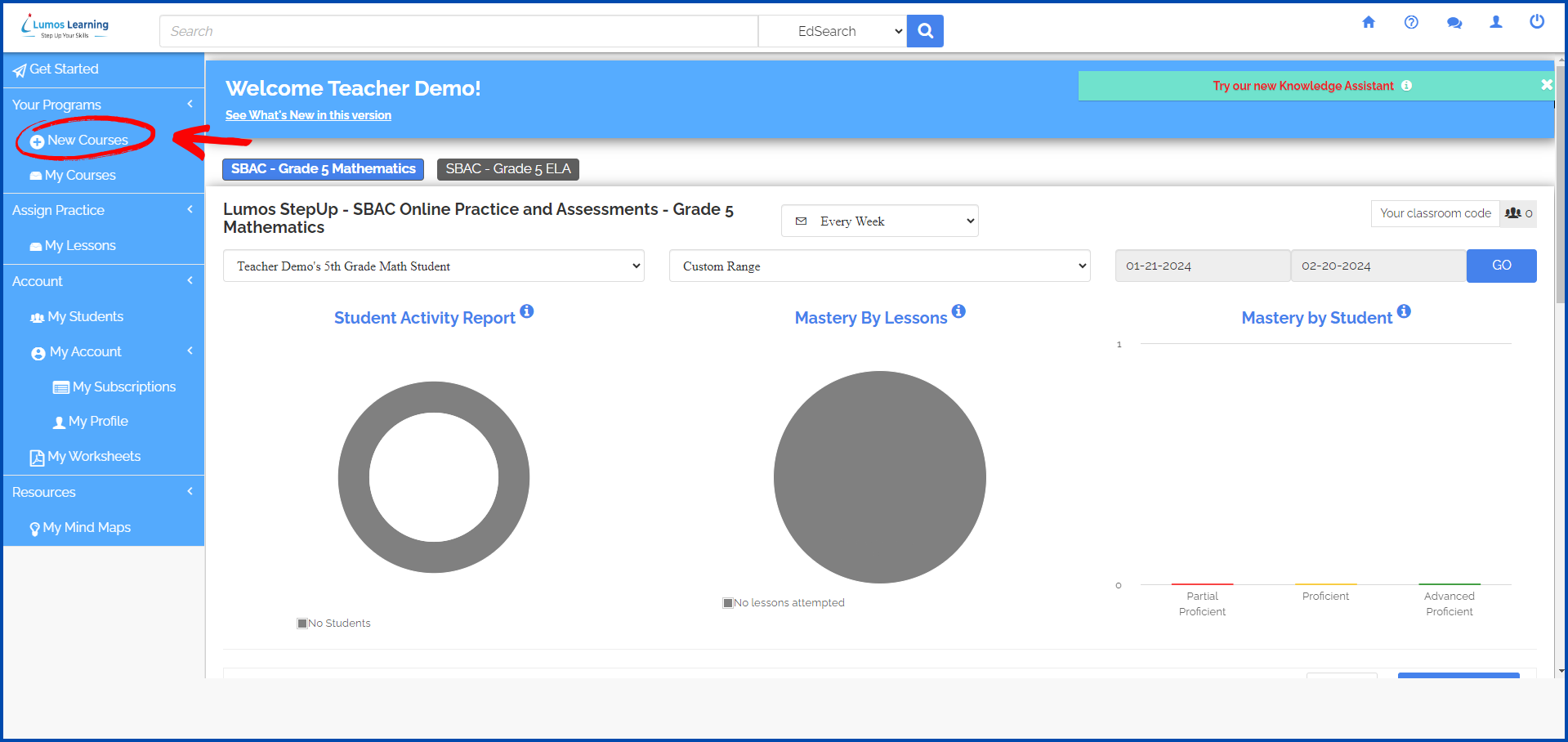
Step 2: Now create a course for the topic you want to add the video lesson. Enter the Chapter name and Lesson and click on “Submit”.
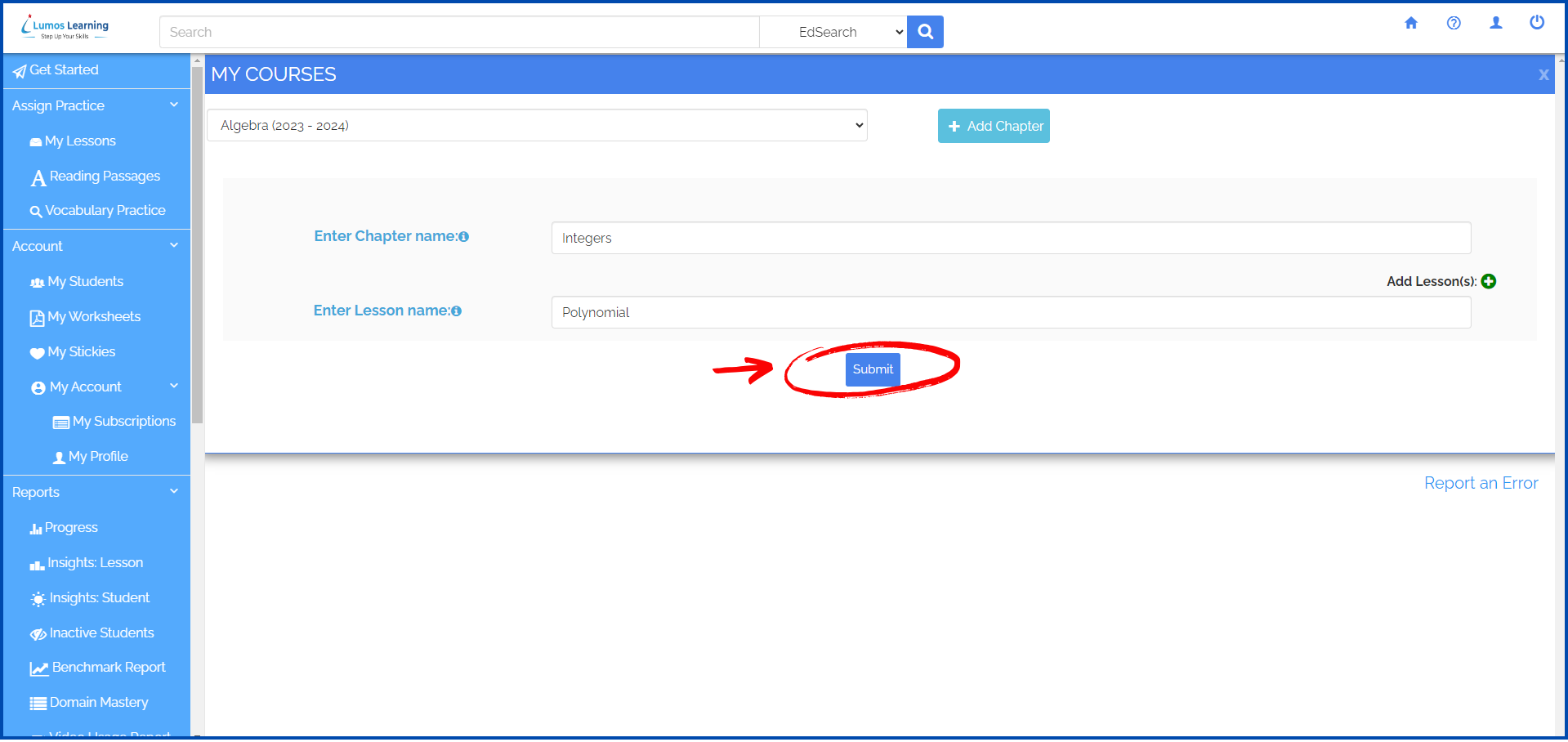
Step 3: Once the lesson is created you will be redirected to the particular course page. Now Click on “Link resources” to add the video of the respective lesson.
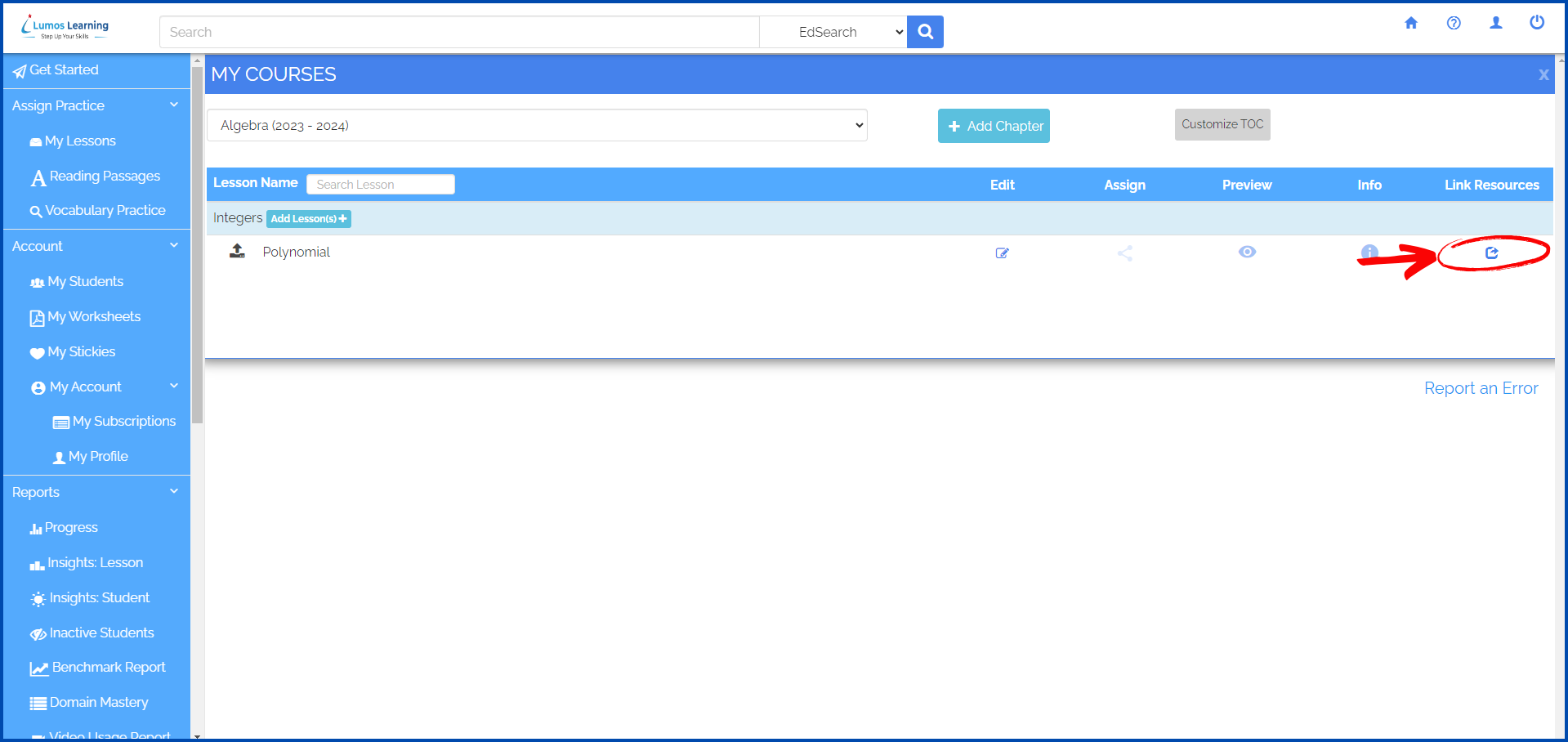
Step 4: Select the source from where you want to upload/import the video from. (Here for demonstration purpose we have uploaded the video from the computer) and Click on “upload”.
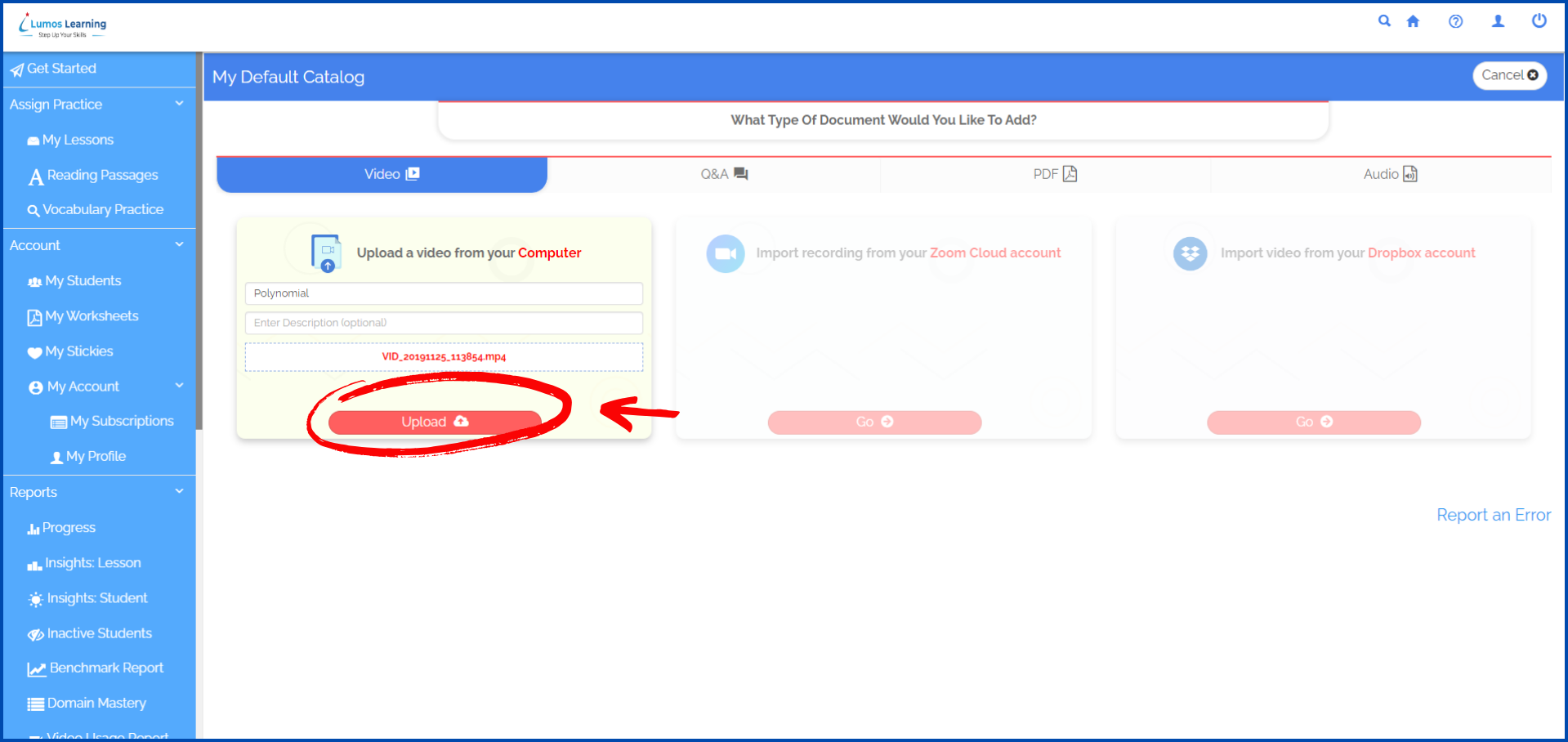
Step 5: After the video is added click on the highlighted icon to link the video to a lesson
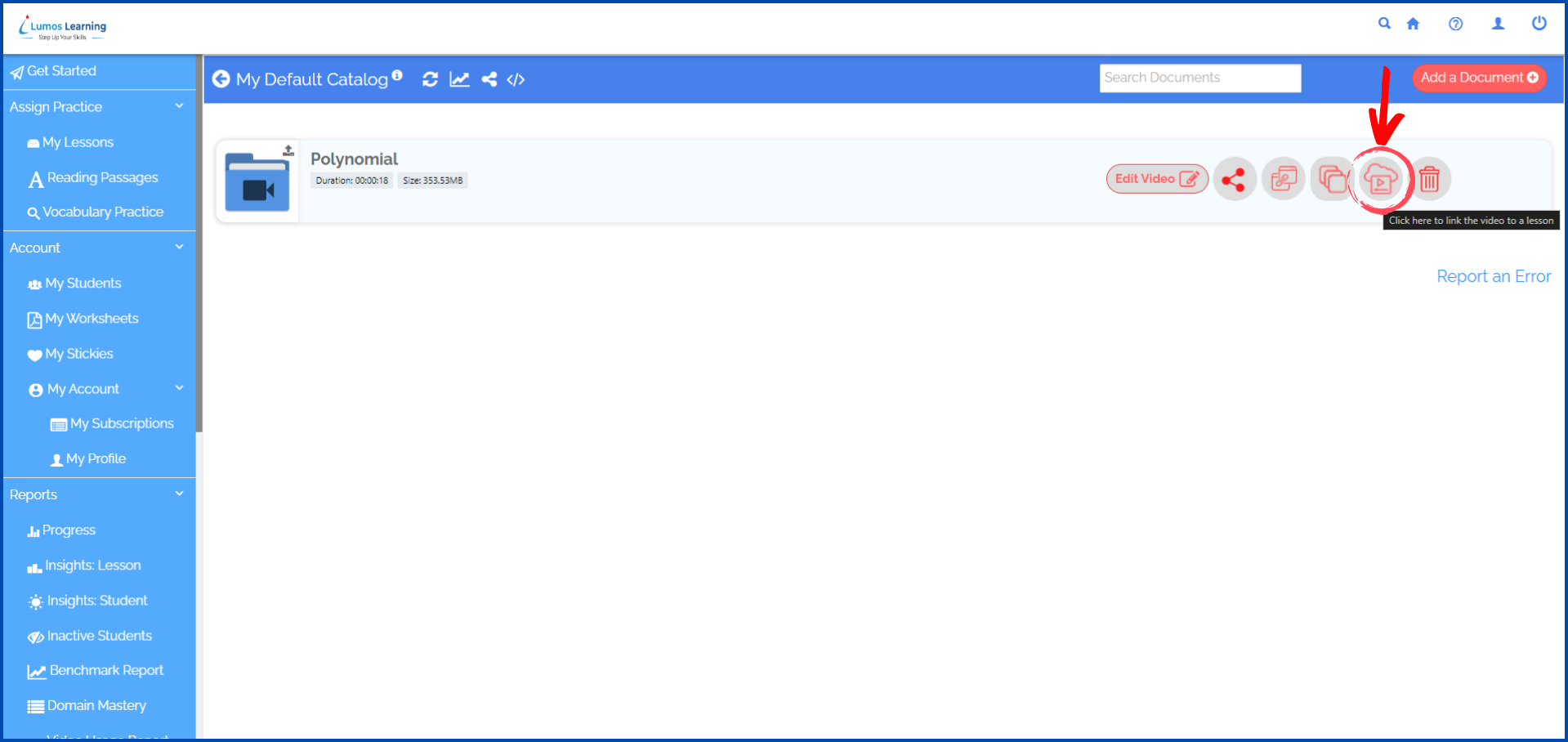
Step 6: Select the lesson from the dropdown you wanted to assign it to and click on “Save Changes”.
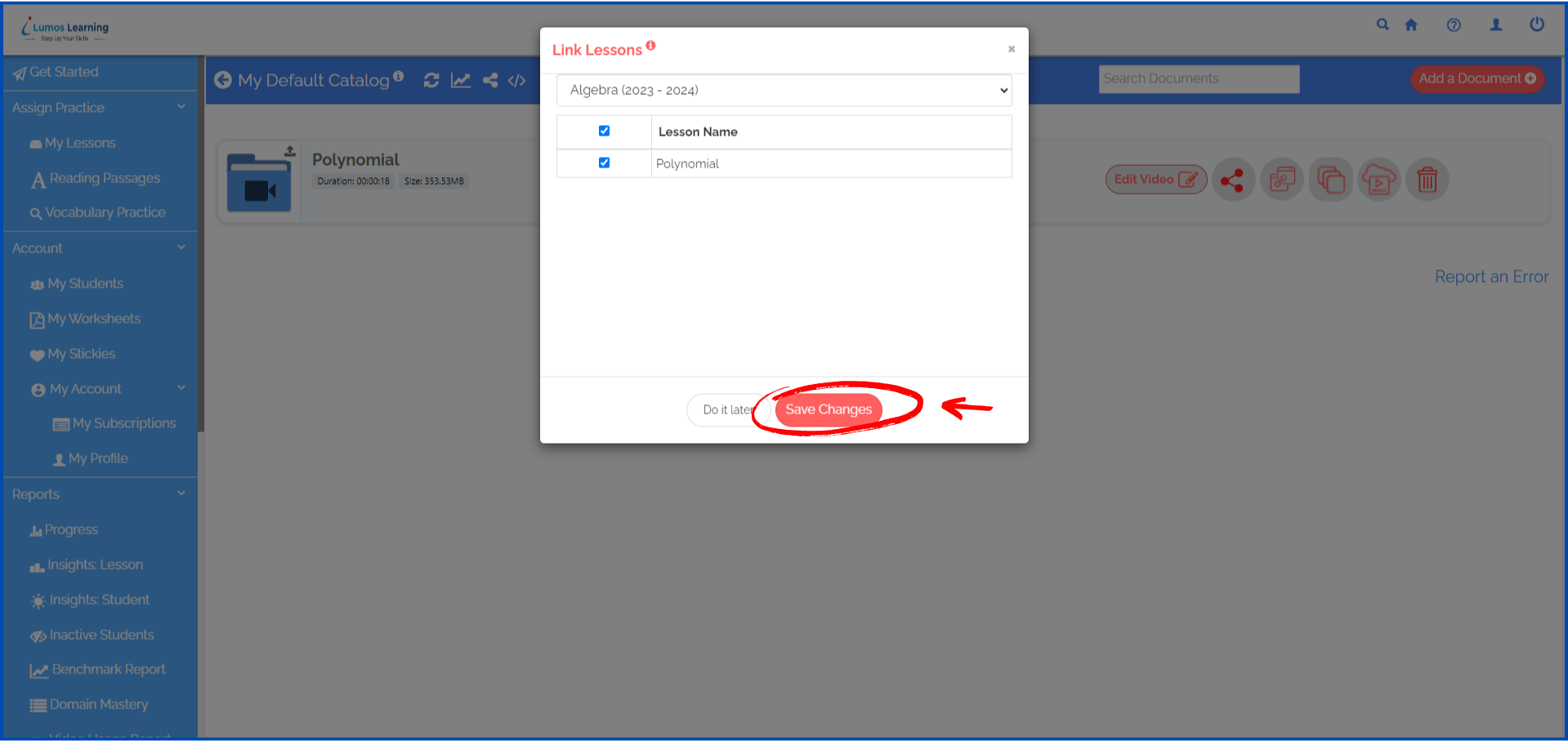
Step 7: The Lesson is Successfully created and you will be able to access all the insights about the video lessons from the dashboard.
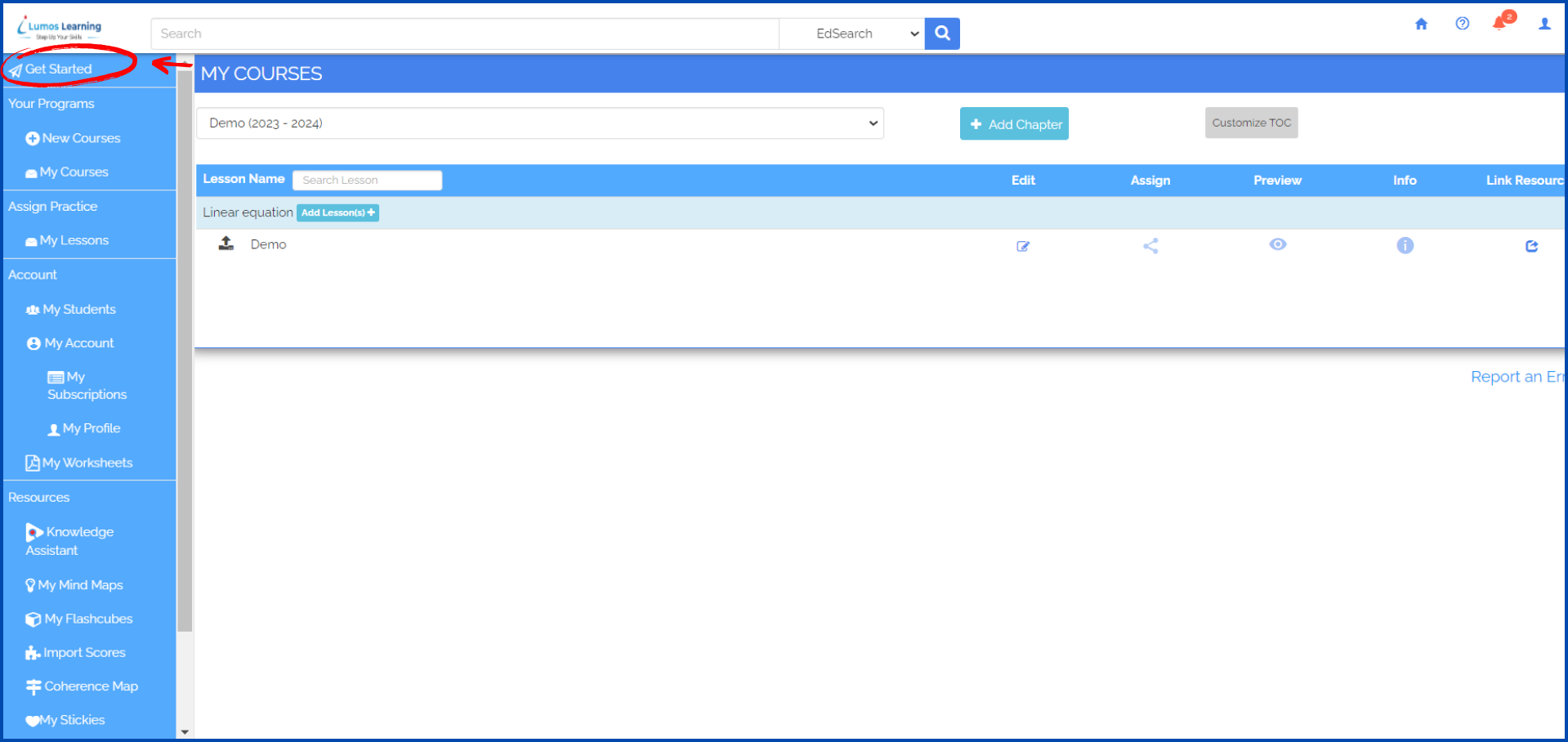
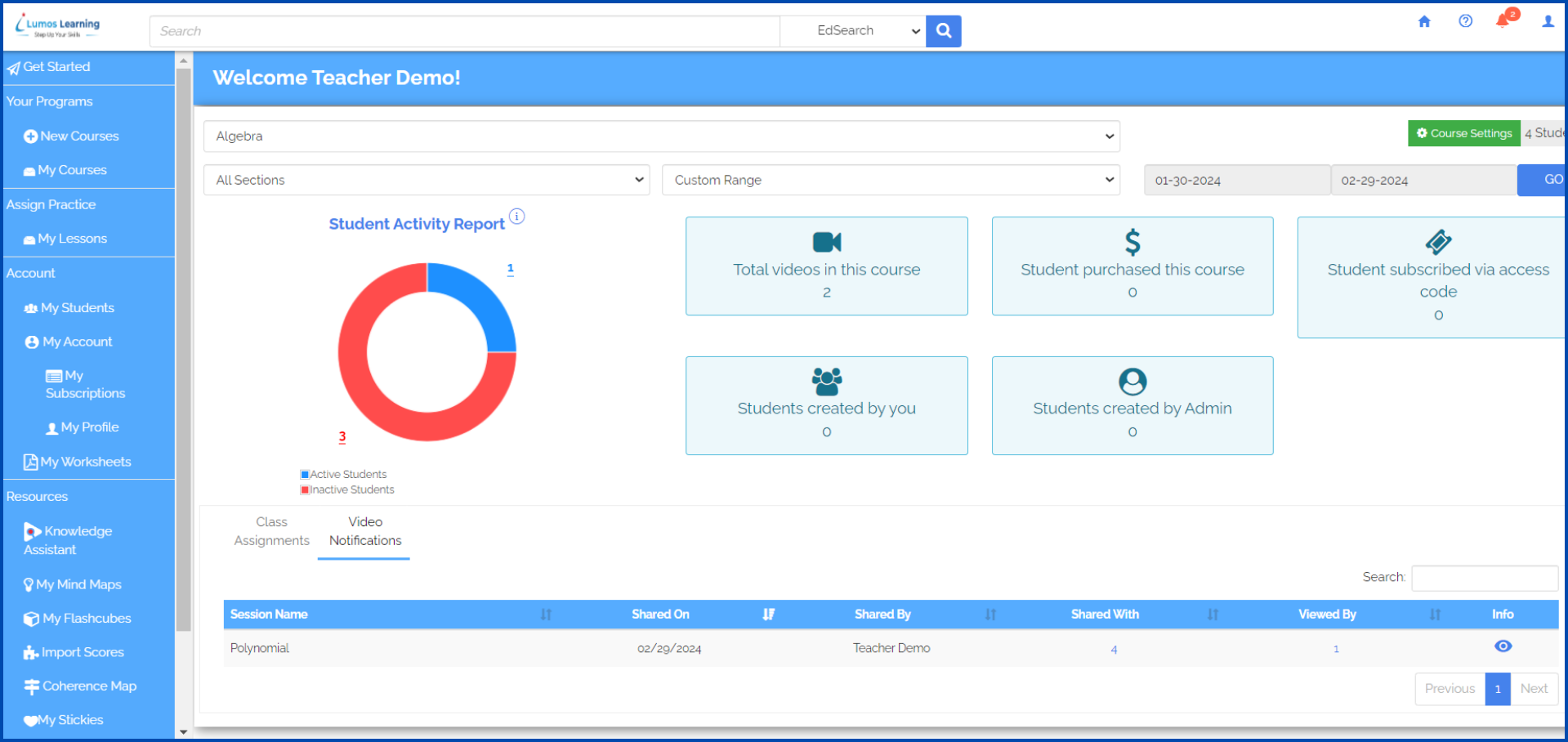
A few Applications of Video Lessons in Your Classroom
Incorporating video learning into your classroom instruction can enhance engagement, comprehension, and student success across various subjects. With Lumos StepUp, teachers can seamlessly integrate pre-existing educational videos or recorded instructional sessions into their lesson plans. Here are some specific use cases for math and ELA instructions:
Video Lessons for Math Instruction
Concept Exploration: Curate educational videos from reputable sources or create your own instructional videos using external tools. Break down complex topics into digestible segments, accompanied by visual demonstrations and real-life examples.
Problem-Solving Demonstrations: Share pre-existing videos showcasing step-by-step solutions to math problems. Select videos that align with the curriculum and provide clear explanations of problem-solving strategies and techniques. Encourage students to follow along and pause or rewind the video as needed to reinforce their understanding.
Math Enrichment Activities: Incorporate supplementary math videos to provide enrichment opportunities for students. Select videos that challenge students to apply their knowledge to real-world scenarios, solve math puzzles, or engage in interactive activities that promote critical thinking and problem-solving skills development.
Video Lessons for ELA Instruction
Literary Analysis: Integrate curated video resources to enhance literary analysis and interpretation skills. Select video clips of literary works, author interviews, or dramatic readings that complement classroom readings. Encourage students to analyze key scenes, characters, or themes presented in the videos and participate in discussions to deepen their understanding.
Grammar and Writing Workshops: Share pre-existing video tutorials on grammar rules, writing strategies, and editing techniques. Select videos that address common language challenges and provide clear explanations and examples. Supplement classroom instruction with videos covering topics such as sentence structure, punctuation, vocabulary usage, and essay organization.
Reading Comprehension Activities: Incorporate multimedia resources to facilitate reading comprehension activities. Curate video excerpts of texts or multimedia resources that enhance students’ understanding of classroom readings. Encourage students to engage with the videos through guided questions or discussions to promote active reading and critical analysis.
By leveraging pre-existing educational videos or recorded instructional sessions within Lumos StepUp, teachers can provide students with diverse learning opportunities, foster deeper understanding, and cultivate a supportive and engaging learning environment in their classrooms.
